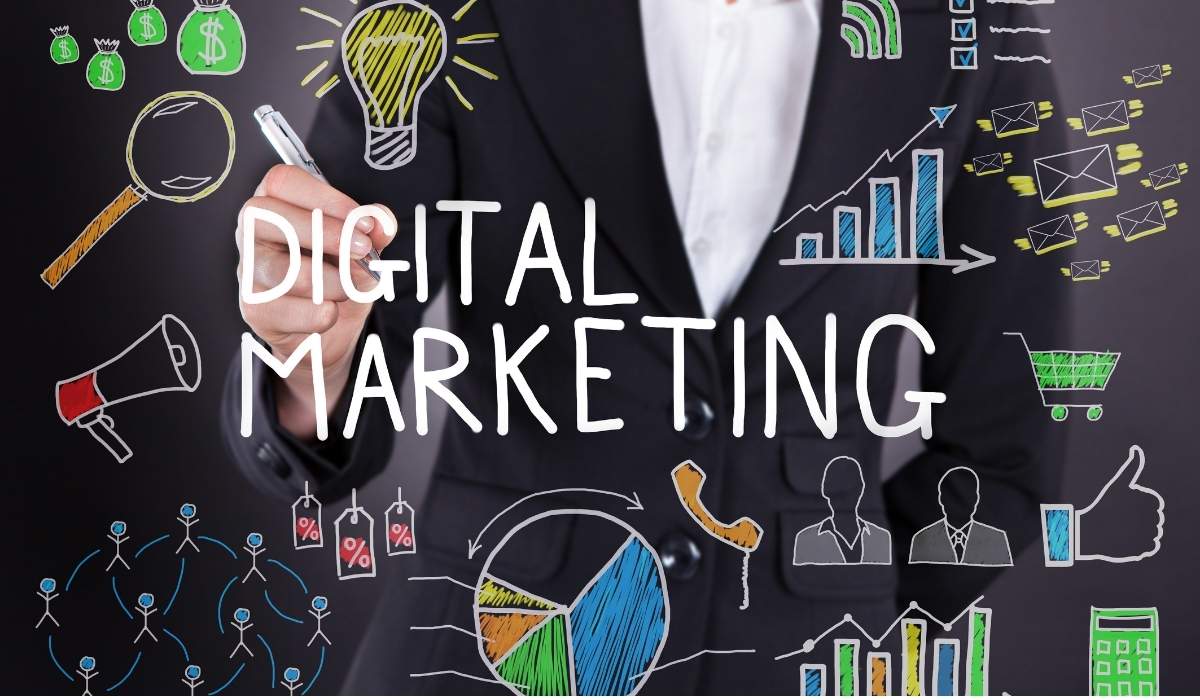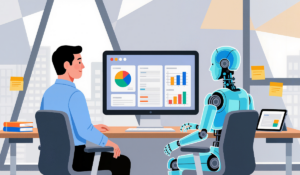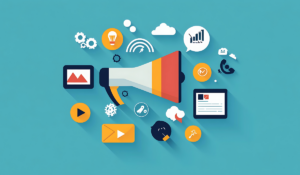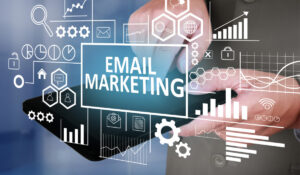The digital marketing landscape in 2025 is vastly different from what it was even a few years ago.
As technology evolves, consumer habits, preferences, and platforms change quickly.
For marketers, business owners, and digital strategists, it is imperative to know the latest digital marketing trends—what’s changed and what still works—in order to remain competitive in today’s marketplace.
In this comprehensive guide, we’ll distill the major digital marketing trends of 2025, indicate what’s new, what works, and illustrate how to align your strategy to succeed in this new environment.
The Digital Marketing Landscape in 2025
Digital marketing has evolved from basic SEO and banner advertising to a comprehensive system that incorporates AI-driven solutions, immersive customer experiences, and hyper-personalized content approaches.
Successful digital marketing trends in 2025 is no longer all about the loudest shout but about building value, trust, and relevance.
As consumers become more informed and privacy becomes a concern, data must be utilized responsibly and ethically.
Today’s marketers must reconcile automation with authenticity, data and facts with storytelling, and velocity with strategy to differentiate themselves from the competition.
What’s Changed in 2025: Emerging Trends and Technologies

The 2025 digital marketing trends indicate a drastic change in the environment.
Consumer behavior, evolving technology, and enhanced privacy laws have altered how marketers strategize and implement tactics.
In order to remain ahead of the curve, it’s essential to learn from these innovations.
Below are five of the most significant digital marketing trends transforming the business this year:
AI-Driven Personalization
Then (2020–2022):
In the early 2020s, personalization was still in its primitive stages. If your name was in the subject line of an email or advertisements were served according to your location or prior shopping history, that was de rigueur for personalization.
Now (2025):
AI has upped personalization to the next level. Now, AI-driven engines can personalize entire digital experiences—website copy, emails, promotions, product suggestions, and even customer support interactions—in real-time.
Advanced AI platforms: Jasper, and Gemini read data in real time to adjust messaging, design, and product suggestions based on the unique user behavior, intent, buying habits, demographics, and real-time activity.
E-commerce sites, for instance, now dynamically reconfigure homepage designs, featured items, banners, and CTA buttons depending on who’s visiting.
A digitally savvy Gen Z shopper might get tech products and influencer collaborations, while a repeat customer might get loyalty points or out-of-stock favorites.
Why it matters:
Hyper-personalized experiences greatly enhance engagement, conversion, and customer retention. By 2025, generic messaging will no longer suffice—users expect brands to “know” them.
Voice and Visual Search Optimization
The growth of intelligent devices and visual tools has been transforming search behavior at a rapid pace, extending beyond the confines of text-based searches.
Voice Search
Voice assistants such as Alexa, Siri, Google Assistant, and in-car innovative systems have become ubiquitous. Consequently:
- 35–40% of all searches across developed markets are now carried out by voice.
- Shoppers communicate with search engines in complete, natural sentences, such as “What are the best running shoes under ₹5000 with arch support?”
Visual Search
Thanks to search giants like Google Lens, Pinterest Lens, and even Instagram, users can now click a photo and conduct an image search.
- Fashion, home furnishings, food, and e-commerce are among the industries that rely significantly on visual search. A consumer can snap a photo of a sofa or purse that appeals to them and instantly find similar options online.
Optimization Strategies for Marketers:
- Utilize natural language keywords in your writing to correspond with voice queries (i.e., “how to repair…” or “best method to…”).
- Implement structured data markup to help search engines understand and index your content better for both voice and visual queries.
- Include high-quality images with descriptive alt text to enhance visual search visibility.
The End of Third-Party Cookies
Over the past few years, global privacy concerns have led to significant changes in how data is collected and used. One of the most critical shifts?
Third-party cookies are gone:
- Browsers such as Google Chrome, Safari, and Firefox have now officially terminated support for third-party cookies.
- These cookies were historically used to track users across multiple sites and display personalized ads based on their web browsing activities.
Impact on Marketers:
- Retargeting and cross-site tracking are significantly harder.
- Most classic digital ad tactics that rely on cookie-based user profiling are no longer effective.
The New Standard: First-Party Data
- Marketers increasingly rely on first-party data—data collected directly from their users (e.g., through forms, surveys, email sign-ups, and purchase history).
- It is more accurate, more ethical, and in compliance with laws such as GDPR, CCPA, and India’s DPDP Bill.
Action Plan for Businesses:
- Invest in CRM systems, customer data platforms (CDPs), and solutions that help aggregate and activate first-party data.
- Offer value exchanges, such as discounts, quizzes, or gated content, to motivate users to provide information willingly.
Emergence of Generative AI Content Creation
Artificial Intelligence has progressed from a support tool to a key content creator in marketing.
What’s happening in 2025:
- Marketers utilize AI-based tools (such as ChatGPT, Jasper, Copy.ai, and Runway) to produce blog posts, videos, ad copy, social media posts, email campaigns, product copy, and even website designs—in bulk and with astounding quality.
- Generative AI can also localize content across languages, test versions A/B automatically, and customize messaging by segments.
Deep Personalization Meets Creativity
AI doesn’t simply spit out formulaic content—it generates data-based, context-specific content by processing:
- User behavior
- Engagement metrics
- Past conversions
- Browsing history
Important Note:
Although AI can do so, search engines like Google now prioritize original, human-first content.
Following its March 2024 Core Update, Google penalizes sites that publish AI-generated fluff or copied content.
Best Practice: Leverage AI for scaling ideas and drafts but edit and add value to content using human ingenuity prior to publication.
Social Media Has Become Entertainment Media
The role of social media has undergone a significant transformation.
It’s no longer about friends—it’s about watching and engaging with bite-sized, bite-of-information content.
Platforms Driving the Change:
- TikTok, YouTube Shorts, and Instagram Reels have dominated the way people watch content at speed, in snackable chunks.
- LinkedIn is even starting to feature short-form B2B video content, simplifying it for professionals to create thought leadership and product demo videos.
Key 2025 Changes:
YouTube’s AI Shorts Assistant: Assists creators and brands to auto-create short-form videos from long-content using AI editing, thumbnail recommendations, and performance forecasts.
TikTok’s advanced algorithm prioritizes not only viral dances and trends but also educational, niche, and entertaining content. This has made TikTok a highly effective tool for brands across various industries.
LinkedIn as a Video Platform: Short-form video is now a powerful tool in B2B marketing, with creators and entrepreneurs leveraging video to explain complex concepts, showcase company culture, or present case studies.
What This Means for Brands:
- Brands need to be creator-thinking, prioritizing storytelling, relatability, and entertainment over sales-based messaging.
- User-generated content, behind-the-scenes footage, tutorials, tips, and genuine conversations receive more attention than slick ads
What Still Works in 2025: Proven Strategies That Continue to Drive Results
Whereas technology and platforms have come a long, long way, most of the fundamental principles of digital marketing are just as relevant—and potent—as before.
Indeed, some of the older methods have only gained effectiveness when paired with contemporary means.
The following are the time-honed tactics that continue to work in 2025 and how they have been repurposed to today’s digital scene:
Content is (Still) King—But Only When It’s Valuable
Then:
From whitepapers to blog posts, content has long been a cornerstone of digital marketing. However, previously, quantity was often prioritized over quality.
Now:
Content in 2025 is still king—but only if it’s high-quality, helpful, and purposeful.
- Google’s Helpful Content Updates (particularly in 2023 and 2024) now value informative, experience-based, and highly researched content.
- E-E-A-T (Experience, Expertise, Authoritativeness, Trustworthiness) remains a major ranking factor.
What works:
- Responding to actual customer queries with profundity and clarity.
- Sharing expert views, data-backed facts, and personal expertise.
- Combining formats: text + video + infographics + interactive tools.
Pro Tip:
Regularly revise old blogs and pillar content to stay up-to-date and improve rankings. Blend human writing with AI-enabled drafting to scale up without sacrificing quality.
SEO is More Strategic Than Ever
Then:
Marketers heavily concentrated on keyword stuffing and backlinks.
Now:
SEO is about providing contextual relevance and being aware of user search intent at various points in the funnel.
What’s working in 2025:
- Topic clusters and content hubs that establish subject authority.
- Semantic SEO: The algorithms at Google comprehend relationships between ideas, rather than keywords.
- Featured snippets, People Also Ask, and voice-answer formats provide prime real estate on SERPs.
Technical SEO remains crucial:
- Quick load times
- Mobile-first design
- Core Web Vitals optimization
- Clean site hierarchy and crawlability
Bonus
With AI search experiences such as Google’s SGE and Bing Copilot in development, structured data and easy-to-scan content enhance discoverability within conversational and AI-generated search results.
Email Marketing: Alive and Profitable
Then:
Email was considered “old school,” but during the 2010s, it still offered a high ROI.
Now:
- In 2025, email marketing remains alive and well, particularly as brands increasingly rely on first-party data.
- Personalized, automated email sequences provide improved open and conversion rates.
- Engaging emails (quizzes, product carousels, polls) retain users in the inbox.
- AI-powered tools facilitate the optimization of subject lines, send times, segmentation, and dynamic content.
Key To success:
- Segmentation: Send interest-, behavior-, or purchase-based content.
- Value-first approach: Sell less, educate more, entertain more, reward more.
- Mobile optimization: Over 75% of email opens occur on mobile devices.
Influencer Marketing—Evolved, Not Faded
Then:
Brands collaborated predominantly with mega-influencers on Instagram or YouTube.
Now:
Micro-influencers (10,000–50,000 fans) and nano-influencers (less than 10,000 fans) are the dominant forces in 2025, characterized by high levels of engagement and trust.
- Authenticity trumps reach for brands.
- Influencers become long-term partners, not sporadic content producers.
- TikTok creators, YouTube podcasters, and even LinkedIn’s leadership thinkers are being engaged for B2B and specialized campaigns.
Best practices:
- Screen influencers based on values, not only quantity.
- Empower co-created content instead of scripted promotions.
- Track success by engagement, traffic, and sales conversion, not impressions.
Video Content—Still the King of Engagement
Then:
YouTube and Facebook videos were common, but most brands weren’t all-in on video strategy.
Now:
Video is not optional in 2025 across all industries and stages of the funnel.
- Short-form: TikTok, Reels, and Shorts (educate, entertain, inspire)
- Long-form: YouTube (tutorials, deep dives, webinars)
- Live: Instagram Live, LinkedIn Live, and Twitch (for live Q&A and product launches)
Video content types that succeed:
- Explainer videos
- Product demos
- Case studies and testimonials
- Behind-the-scenes company culture clips
Tip:
Take advantage of AI video editing software, such as Descript, Runway, or Pictory, to create content more quickly and in volume without a full production team.
Strong Brand Messaging Still Builds Loyalty
Then:
Brands primarily applied storytelling to campaigns or on their homepage.
Now:
Storytelling is integrated into all channels, including social media posts, email sequences, and even chatbot responses.
- Customers long for authentic, purpose-driven brands with human stories.
- Gen Z and Gen Alpha viewers tend to back companies whose values align with their own.
- Authentic brand voice and uniform messaging across channels create community and trust.
Action Tip:
Create a brand style guide that includes tone, messaging pillars, and narrative patterns. Make sure each marketer or agency partner uses the same voice.
Data-Driven Marketing Stays the Backbone
Then:
Marketers utilized Google Analytics and ad dashboards to track campaigns.
Now:
In 2025, data informs every choice—but responsible use of data is equally crucial as intelligent analysis.
- GA4, CDPs, and AI-driven analytics solutions enable marketers to grasp full-funnel performance, from awareness to LTV.
- Product choices, content direction, and ad targeting are guided by first-party data insights.
- Predictive analytics anticipates future behavior, not simply reports on past behavior.
Key change:
Now, marketers need to combine quantitative analytics with qualitative feedback (through surveys, reviews, support interactions) to get the whole story.
Paid Advertising Still Pays—With a Smarter Approach
Then:
The default approach was straightforward: spend on Facebook and Google Ads, and scale what’s working.
Now:
Paid advertising still works, but increased costs, algorithm changes, and evolving privacy policies demand more intelligent targeting, creative approaches, and more effective measurement.
- Brands now have to experiment with multi-platform approaches, including Google, YouTube, Meta, TikTok, Pinterest, Reddit, and programmatic advertising.
- Creative counts more than ever—ads have to feel like content, not ads.
- AI and automation help with bidding, audience estimation, and ad variation.
2025 Tip:
Leverage Performance Max, Advantage+ Shopping, and Smart Campaigns with manual overrides and first-party data integrations to find the balance of control and automation.
Final Thoughts: Winning in 2025 and Beyond
To succeed in 2025, marketers must adopt major digital marketing trends while remaining customer-centric.
One of the biggest trends is AI-driven personalization, which enhances user experiences without being intrusive.
Success comes from combining AI with human creativity to create genuine, compelling campaigns.
The marketing community needs to focus on long-term value rather than quick wins, keeping an eye on trust, relevance, and actual solutions.
While technology continues to evolve, at its core, digital marketing has remained consistent: solve problems, deliver value, and engage authentically with your audience.
FAQ’s
Is AI actually dominating digital marketing in 2025?
AI isn’t replacing marketers—it’s enabling them to work more intelligently. It accelerates personalization and content production, but it’s the human touch that makes the campaigns truly connect.
Should I continue investing in SEO when it seems that everything is now AI-powered?
Yes. SEO is more strategic than ever. Search engines still care about relevance, authority, and valuable content, particularly when it’s built with genuine user intent.
Is email marketing still effective in 2025?
Yes! Email remains a solid driver of ROI, particularly with personalized, behavior-based sequences. It’s alive and well due to improved segmentation and mobile-first design.
Do I need to create short videos for TikTok and Reels?
Want attention in 2025—yes. Short-form video drives massive engagement. It’s not about perfection; it’s about being entertaining and relatable.
How do I market effectively without third-party cookies?
Emphasize first-party data collection ethically—by means of forms, quizzes, or gated content. It’s more accurate, future-proof, and fosters direct relationships with audiences.



